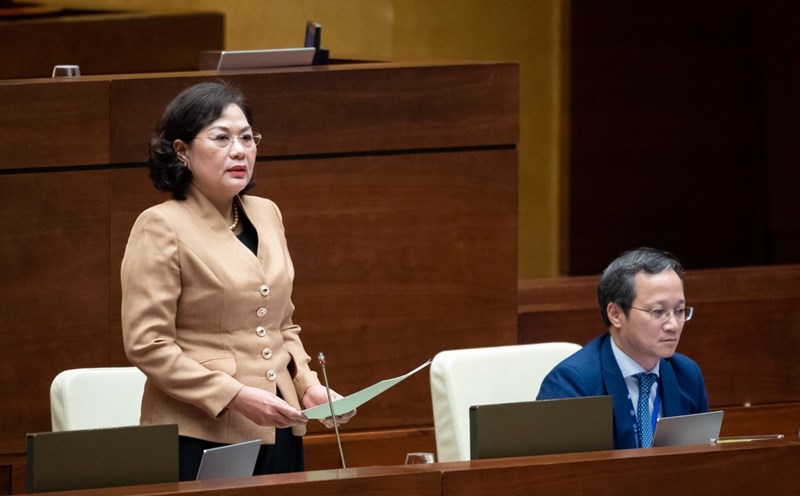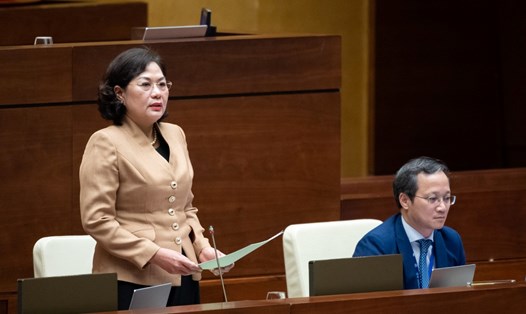Gold prices and big "waves"
The year 2024 witnessed strong fluctuations in the gold market. Domestic gold prices peaked at VND92.4 million/tael. This was not only a historical milestone but also highlighted the shortcomings in the management and operation of the gold market.
According to the State Bank of Vietnam (SBV), the world gold price has continuously set historical peaks in 2024, especially on September 26, 2024, when it reached 2,700 USD/ounce. The reason is determined to be due to the need to store safe assets in the context of economic and geopolitical instability, the impact of major bank bankruptcies such as Credit Suisse and the increase in gold reserves purchased by central banks.
Meanwhile, in the country, experts say that people, who consider gold a safe haven, have rushed to buy gold when savings interest rates have dropped sharply. This has led to a phenomenon of high demand while supply is limited because the State Bank of Vietnam (SBV) has a monopoly on importing raw gold and there is only one brand of gold bars, SJC.
The State Bank also said that since the end of 2021, the difference between domestic and world gold prices has increased sharply, at times reaching VND 18 million/tael (~25%), much higher than the period 2014-2021, when the difference was only about VND 3 million/tael.
State Bank's solution
Faced with the increasing gap between domestic and international gold prices, the State Bank of Vietnam has implemented a series of market stabilization measures since June 2024. The measures include: Gold bar auctions: The State Bank of Vietnam organized 9 auctions, supplying 48,500 taels of gold to the market. Direct gold sales: The gold sale program through 4 state-owned commercial banks and SJC Company was implemented at prices regulated by the State Bank of Vietnam. Switching to online sales: In order to limit the situation of jostling and hoarding, each person is only allowed to buy a maximum of 1 tael of gold through the online system.
With the above series of solutions, the result is that the difference between domestic and world gold prices has decreased significantly, from 20 million to about 4-5 million VND/tael.
Directions for the future
Sharing with reporters, Associate Professor Dr. Ngo Tri Long - economic expert - commented that stabilizing gold prices is a necessary step to minimize negative impacts on the macro economy, but this is only a short-term solution.
He emphasized that in the long term, it is necessary to change the way the gold market is managed in a more transparent and effective manner. Solutions should focus on diversifying gold products such as developing new financial instruments including gold certificates and derivative contracts. At the same time, connecting with the international market to eliminate dependence on physical gold and build a transparent trading system is essential. Finally, he warned that to reduce the gold-ization of the economy, it is necessary to encourage investment in production and business sectors instead of focusing too much on gold.
In a recent official dispatch responding to voters from the State Bank, the agency said that in the coming time, the State Bank will continue to coordinate with relevant agencies to control the gold price difference at an appropriate level.
The agency said it is finalizing a report proposing amendments to Decree 24/2012/ND-CP, including content on the management of gold bar production, to improve the effectiveness of managing the domestic gold market.
According to the State Bank, these solutions not only aim to minimize risks from gold price differences but also aim to build a stable, healthy gold market that is suitable for the practical situation.
In fact, in recent statements, the SBV has repeatedly emphasized its commitment to soon amend Decree 24/2012/ND-CP to improve the effectiveness of gold market management. Despite many promises about progress, the agency has yet to disclose any specific details about the content of the amendment or the implementation roadmap. This has caused the public, especially investors, to continue to question its ability and real determination to resolve the long-standing shortcomings of the gold market.











